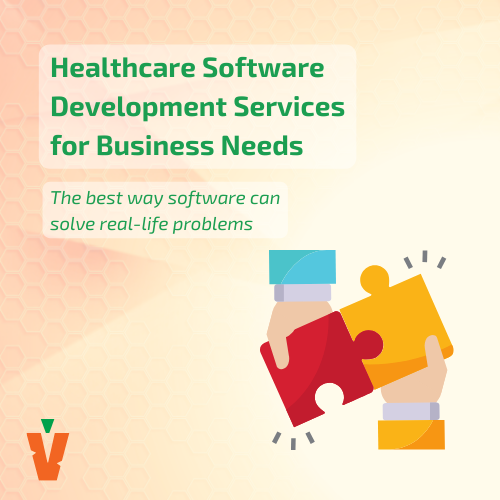Do you struggle with health tech stacks for building your SaaS products? Find tips and suggestions below.
Are you building a SaaS product for healthcare and trying to decide which tech stack to use? There’s no one-size-fits-all answer, but thanks to our 60+ successful projects, we can provide guidelines to streamline your selection process.
Given the industry’s need for compliance and interoperability, anything that helps store, transmit, and protect data is good to use. Various programming languages, frameworks, and databases can get the job done — tick the boxes of core requirements, and you’re free to pick based on preference.
How to Choose the Best Health Tech Stack
Choose technologies that match project objectives — you’re building that SaaS product, meaning you understand its needs best. But while this principle sets you on the right path, it still leaves multiple potential options.
Here are additional factors in selecting a tech stack for healthcare:
- Look at the bigger picture. Consider the healthcare SaaS product within your ecosystem and plans for the future. Pick tools that enable scalability, interoperability, and accessibility, layering cutting-edge technologies over an established base. That’s how you avoid obsolescence without making the software too complicated or high-tech for healthcare in the present.
- Prioritize ease of use. Employ a user-centric design on your platforms and stories, and make every element valuable. Features like redundant data entry, a lack of integrations with the ecosystem, and the inability to access documentation are no-nos for healthcare SaaS.
- Consider your developers’ capabilities. They can master new health tech stacks but will perform better with the tools they already know. Whenever possible, use a stack familiar to your team to let them develop faster and create higher-quality SaaS solutions.
Ultimately, multiple technologies can yield similar results. Don’t start with a specific tech stack — define your objectives and create a feature roadmap first. Then, find the technological solution that fits the bill.
Once you have the basics down, why not future-proof? It pays to think about the healthcare technology trends that seem to be shaping the future.
We expect AI, IoT, and VR to grow bigger in healthcare each year, so choose a health tech stack that sets you up for the future. Pick one that supports AI integrations, like the TensorFlow framework for machine learning. Cloud platforms like AWS also have robust AI/ML capabilities and can hold the heaps of data gathered by wearables. You can enable AR and VR with Unity or a similar platform.
As long as you maintain security and capacity for large data loads, you’ll be ready for whatever comes next in healthcare technology.
Health Tech Stack Components: Overview & Suggestions
Modern technology users have sophisticated demands, and healthcare products usually lag behind these requirements. As a result, having robust software with multiple functionalities can put you head and shoulders above the competition. On the other hand, no core feature, frontend or backend, should bug or fail if you want to launch successfully and on time — we’ve seen months and years of release delays due to poorly integrated or executed technologies.
So, you need high functionality and impeccable core features. Let’s break down the health tech stack into components to help you get there.
Programming Languages
In healthcare SaaS development, programming languages control how software collects, processes, stores, and presents health data. They also enable complex algorithms to perform tasks like predictive modeling and decision-making, enhancing efficiency and patient outcomes.
A health tech stack usually contains Java, C#, C++, Python, or PHP for the backend. JavaScript is the most popular for the frontend.
As you probably know: Most projects require several programming languages to power frontend and backend development. For instance, JavaScript and HTML construct a user interface, and Python and Java enable server-side processing and integrations.
The language choice depends on the idea behind the SaaS solution. Looking at big industry names, the Noom is health maintenance app runs on Java, JavaScript, jQuery, Python, and AWS Amplify.
Cloud Platform
Cloud platforms are online computing resources and storage solutions. They let you use tools on-demand without paying for and maintaining physical infrastructure. The built-in security features and compliance certifications make them suitable for healthcare use cases.
These are the cloud platforms that appear in health tech stacks:
- Microsoft Azure: A wide range of cloud services for healthcare. These include Azure API for FHIR for secure health data exchange, security and compliance documentation for regulations like HIPAA, Azure Machine Learning for predictive analytics, and Azure IoT for remote patient monitoring.
- Amazon Web Services (AWS): Offers HIPAA-eligible services like Amazon Elastic Compute Cloud (EC2) for scalable computing power, Amazon Relational Database Service (RDS) for secure database management, and AWS IoT Core to let your tool connect with wearables.
- Google Cloud Platform (GCP): Features solutions like Google Cloud Healthcare API for secure data exchange, BigQuery for healthcare data analytics, and Cloud IoT Core for integrating and managing IoT devices.
Databases
Databases are data sets within a computer. In healthcare SaaS, the tech stack may include data management platforms like MySQL, Oracle, MongoDB, and Amazon Aurora.
Web Frameworks
Web frameworks can handle user interactions, data management, and displaying content. They make development faster, more organized, and less prone to errors, letting developers focus on unique features and the overall UX.
We commonly see Bootstrap, Node.js, Django, Spring, and Flask in health tech stacks. Each has unique benefits — Bootstrap is a frontend framework for responsive and mobile-first sites, and Django is ideal for Python developers.
Which frameworks do the giants employ? For instance, Medtronic is a healthcare device company that uses Vue.js and Bootstrap.
DevOps Frameworks
Using DeOps frameworks is among the top healthcare technology trends for building SaaS products. They allow automation, CI/CD workflows, logging, and monitoring. GitHub, Sentry, Jenkins, and Selenium are oft-used DevOps tools in health tech stacks.
APIs and Integrations
Interoperability is more than a healthcare technology trend — it’s necessary for software that supports patient outcomes. An interconnected system will account for every bit of PHI, making healthcare delivery less paperwork-heavy.
APIs let different systems communicate in real time, and integrations keep them compatible and able to utilize the same data. Common integration tools include APIs like FHIR, OAuth/OpenID Connect, DICOM, and Allscripts.
The Vitamin Sanity Check for Tech Stack Selection
We firmly believe that simplicity yields success in software development, so we opt for functional technology that isn’t necessarily flashy. Our choice of tech stacks reflects this belief.
Any healthcare tech client that works with us goes through the Vitamin Sanity Check before we start developing software for them. In this step, we check the idea and approach for capital efficiency and viability and see whether there’s an easier or simpler way to reach your goals.
When Should You Buy Instead of Building?
You could build every part of your software solution in-house, but it’s not always necessary, nor the best use of your limited budget as a division leader or a healthcare start-up executive. There are well-optimized market solutions to purchase, so you’re not reinventing the wheel if you need something specific.
Deciding to buy instead of building has its benefits and drawbacks. As one of Vitamin’s engineers put it:
‘It’s not only about technologies but services as well, i.e., other SaaS or PaaS that you might use to reduce the initial investment cost and the time-to-market. But this has other drawbacks, like potentially higher TCO, security and compliance issues, or being dependent on an external third party.’
— George Voicu, Technical Lead
Seek great-fit solutions for your new healthcare SaaS. They can simplify procedures and make your products faster, better, and cheaper. However, be sure to only use those that are secure enough and come from reliable providers to avoid the issues that George mentioned. For example, GoCardless for payment processing and Nirvana for insurance verification.
Tech Stack Takeaways: It’s All About Synchronization
Center your tech stack on synchronization, and it will work well. Various tools should work well together to exchange data and help systems work together. Prioritize technologies that contribute to consistent and (if possible) swift data transmission to make the finished product well-suited for the healthcare industry.
We at Vitamin help our clients achieve their business goals — including the best health tech stack to make their vision come to life. During the Vitamin Sanity Check, we analyze your business needs and proposed solutions, ensuring they’re viable and capital-efficient.
Contact us for a consultation if you’re struggling to select tech, and we’ll guide you in the right direction.



.png)
